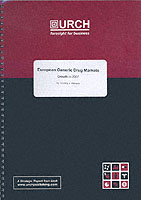- ホーム
- > 洋書
- > 英文書
- > Cinema / Film
Full Description
What's your impression of the CIA? A bumbling agency that can't protect its own spies? A rogue organization prone to covert operations and assassinations? Or a dedicated public service that advances the interests of the United States? Astute TV and movie viewers may have noticed that the CIA's image in popular media has spanned this entire range, with a decided shift to more positive portrayals in recent years. But what very few people know is that the Central Intelligence Agency has been actively engaged in shaping the content of film and television, especially since it established an entertainment industry liaison program in the mid-1990s. The CIA in Hollywood offers the first full-scale investigation of the relationship between the Agency and the film and television industries. Tricia Jenkins draws on numerous interviews with the CIA's public affairs staff, operations officers, and historians, as well as with Hollywood technical consultants, producers, and screenwriters who have worked with the Agency, to uncover the nature of the CIA's role in Hollywood.
In particular, she delves into the Agency's and its officers' involvement in the production of The Agency, In the Company of Spies, Alias, The Recruit, The Sum of All Fears, Enemy of the State, Syriana, The Good Shepherd, and more. Her research reveals the significant influence that the CIA now wields in Hollywood and raises important and troubling questions about the ethics and legality of a government agency using popular media to manipulate its public image.
Contents
Acknowledgments Introduction Chapter One. Rogues, Assassins, and Buffoons: Representations of the CIA in Film and Television Chapter Two. Opening the Doors: Why and How the CIA Works with Hollywood Chapter Three. Necessary and Competent: The CIA in The Agency and In the Company of Spies Chapter Four. The Chase Brandon Years Chapter Five. The Legal and Ethical Implications of the CIA in Hollywood Chapter Six. The Last People We Want in Hollywood: The Retired CIA Officer and the Hollywood Docudrama Conclusion Notes Bibliography Index







